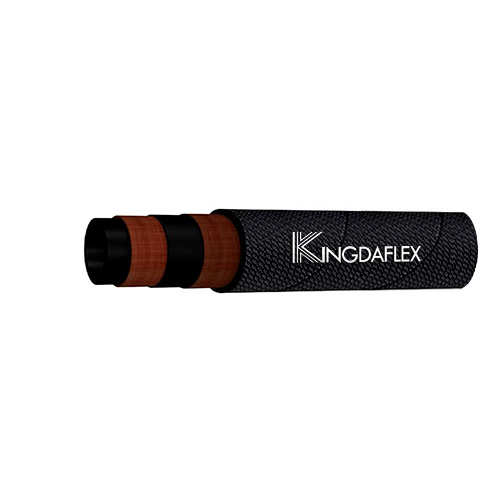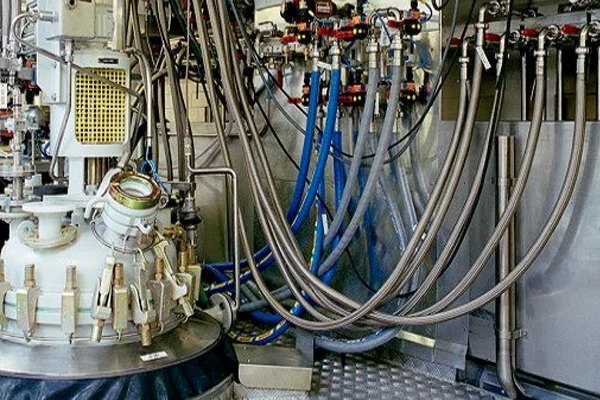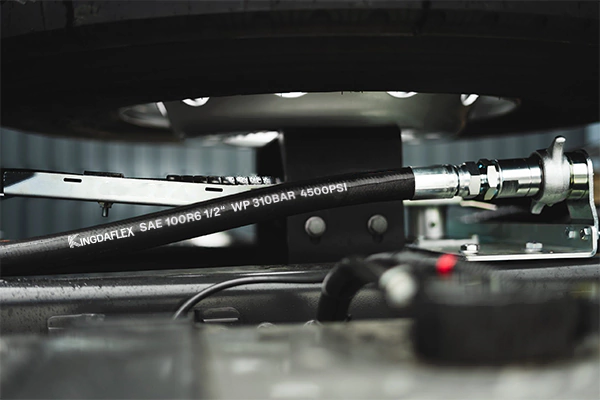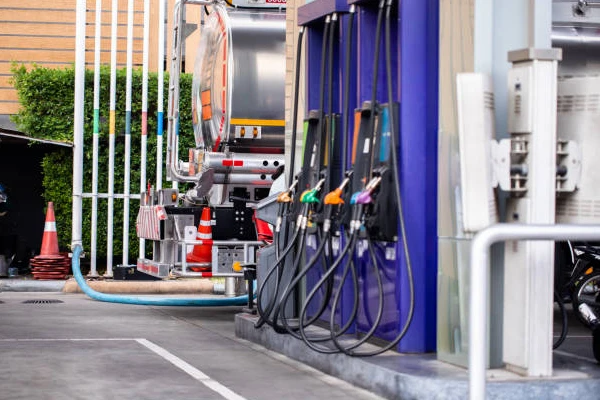Properly using a sandblast hose is crucial for both the safety of the operator and the efficiency of the blasting process. These hoses are engineered to handle extreme pressure and highly abrasive media, but improper use can lead to serious accidents and costly equipment damage. Understanding the correct procedures is key to a successful job.
This guide will walk you through the essential steps for using a sandblast hose safely and effectively. From making a secure connection to proper handling during operation and storage, you’ll learn the best practices that ensure your equipment performs optimally and remains in top condition for years to come.
What are Sandblast Hoses?
Sandblast hoses are highly specialized, heavy-duty hoses designed to convey a mixture of compressed air and abrasive media from a blast pot to a nozzle. Unlike standard air hoses, they feature a robust, abrasion-resistant inner tube made from natural rubber or other synthetic compounds that can withstand the constant, high-speed friction of materials like steel grit, sand, or glass beads.
The sandblasting hose is further reinforced with multiple textile braids or steel wire to contain the high pressures involved in the sandblasting process, ensuring both safety and efficiency in demanding industrial applications.
What are Sandblast Hoses Used for?

Sandblast hoses are used as a critical link in any abrasive blasting system, serving the essential purpose of safely and efficiently transporting high-pressure compressed air and abrasive media from the blast pot to the nozzle. Their specialized construction is designed to withstand the harsh conditions of this process, ensuring a powerful and consistent flow of media. Without a properly functioning sandblast hose, the entire blasting system would be rendered inoperable, as it is the component that directs the abrasive force to the target surface.
- Etching and Finishing: In addition to aggressive cleaning, they are also used for delivering media for lighter tasks such as etching glass or creating a uniform finish on various materials for aesthetic purposes.
- Surface Preparation: The primary use of sandblast hoses is to deliver media for preparing surfaces by removing rust, scale, old paint, and other contaminants. This creates an optimal profile for new coatings.
- Cleaning and Restoration: They are used in restoration projects to clean and restore a variety of surfaces, including brick, concrete, stone, and metal. This is essential for historical buildings, bridges, and vehicle bodies.
- Industrial Applications: Sandblast hoses are vital in industrial settings like shipyards, foundries, and construction sites for heavy-duty cleaning and surface profiling of large structures and machinery.
How to Use Sandblast Hoses?
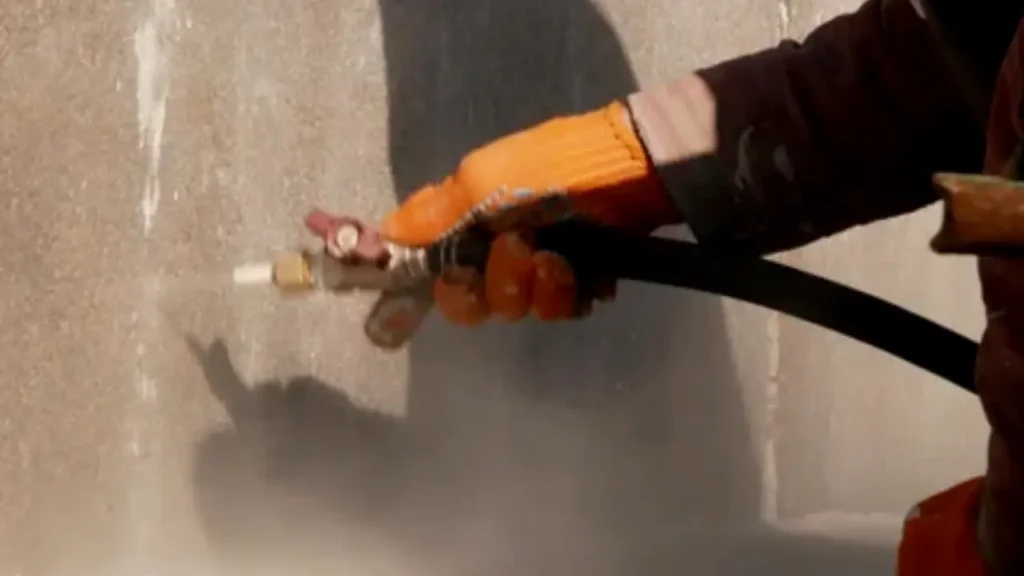
Using a sandblast hose correctly is critical for both safety and performance. Proper use ensures that the abrasive media is delivered efficiently while protecting the operator and extending the life of the hose. Here are the essential steps to follow.
Step 1: Pre-Use Inspection
Before every use, carefully inspect the entire length of the sandblast hose for any signs of damage. Look for cuts, cracks, bulges, or excessive wear on both the outer cover and inner tube. Never use a damaged hose, as it can lead to a dangerous rupture under pressure.
Also, check the hose couplings for any wear or a loose fit. A worn or improperly secured coupling can detach during use, causing the hose to whip violently and pose a serious safety hazard. Ensure all connections are tight and secure before pressurizing the system.
Step 2: Making Connections
Connect the hose to the blast pot and nozzle using the correct couplings and safety pins. The connection should be tight and secure, with no gaps that could allow air or media to leak. A loose connection will not only reduce your blasting efficiency but can also be extremely dangerous if it fails under pressure.
Properly secure all connections with safety pins or wire. This crucial step prevents the hose from decoupling due to the high pressure and vibration of the system. Always double-check these safety measures to guarantee a secure, leak-free, and safe operation.
Step 3: Proper Handling During Blasting
During operation, avoid bending or kinking the hose into tight angles. Kinks can create blockages, cause media to build up, and weaken the hose’s reinforcement, which could lead to a burst. Lay the hose out in a smooth, gentle curve to allow for an even flow.
Do not allow vehicles or heavy equipment to run over the hose, as this can crush the inner tube and compromise its integrity. Keep the hose away from sharp objects and hot surfaces to prevent cuts or material degradation.
Step 4: Post-Use Maintenance
After each use, depressurize the system and clear any remaining media from the hose. This prevents media from settling and potentially causing clogs or uneven wear inside the hose. Store the hose in a cool, dry place.
Coil the hose loosely for storage to prevent kinks or permanent bends from forming. Avoid hanging it on sharp hooks, which can cause damage to the cover. Proper storage extends the life of your sandblast hose.
What Can Sandblast Hose Remove?
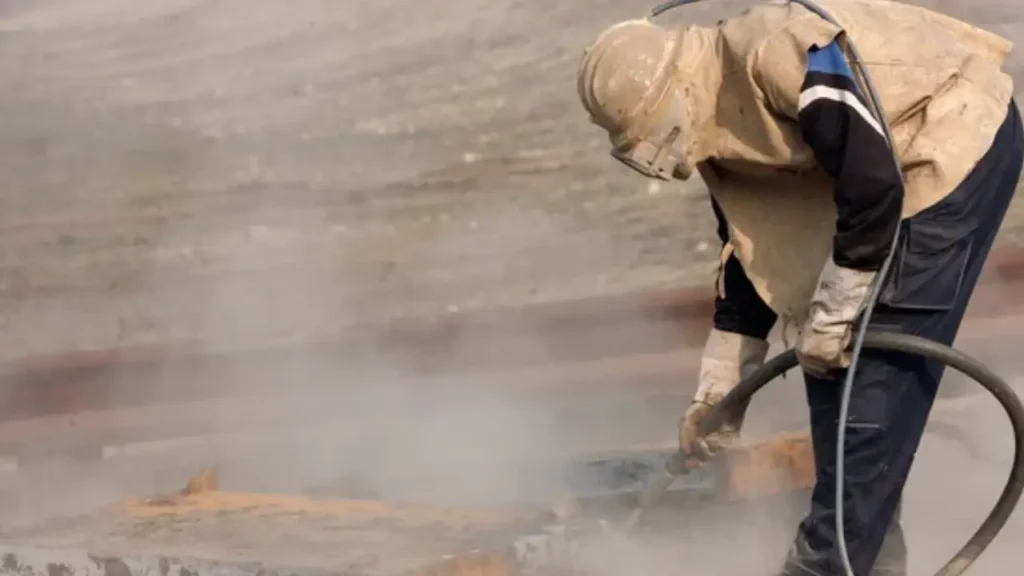
A sandblast hose, as a component of a complete sandblasting system, is capable of removing a wide variety of tough contaminants and coatings from durable surfaces. The hose’s primary role is to deliver the abrasive media with enough force to strip away materials that are deeply bonded to the surface, a task that would be difficult or impossible for other cleaning methods.
The specific materials it can remove depend on the type of abrasive media being used, from aggressive grits for metal to softer media for more delicate surfaces.
- Rust and Corrosion: Sandblasting is one of the most effective methods for stripping away rust and scale from metal surfaces, preparing them for a new protective coating.
- Old Paint and Coatings: It can quickly and efficiently remove multiple layers of paint, powder coatings, and other finishes from metal, wood, and concrete.
- Grime and Dirt: The high-velocity impact of the media is excellent at removing years of built-up dirt, grime, and other environmental contaminants from brick, stone, and masonry.
- Graffiti: Sandblasting can be used to remove spray paint and other graffiti from public and private surfaces, especially from porous materials like brick and concrete.
- Grease and Oil: When used with the right media, it can effectively clean oily and greasy surfaces in industrial settings, making them suitable for repair or re-coating.
Where to Use Sandblast Hoses?

Sandblast hoses are used in a wide range of industrial, commercial, and even residential settings where heavy-duty surface preparation is required. Because they are designed to handle high pressure and the constant flow of abrasive media, they are indispensable in environments that require the removal of tough contaminants like rust, old paint, and grime from durable surfaces.
Their versatility allows them to be used in both large-scale industrial operations and smaller restoration projects.
- Construction Sites: Used for preparing concrete, brick, and steel structures for new coatings, or for restoring historical masonry to its original appearance.
- Shipbuilding and Marine Maintenance: A critical component for removing barnacles, rust, and old paint from ship hulls and decks to prepare them for new protective coatings.
- Foundries and Manufacturing Plants: Used to clean molds, remove scale from newly cast parts, and prepare surfaces of heavy machinery for maintenance or new finishes.
- Automotive and Restoration Shops: Essential for stripping old paint and rust from vehicle bodies and parts to prepare them for a new paint job, ensuring a clean, durable surface.
- Oil and Gas Industry: Utilized for maintaining and preparing pipelines, storage tanks, and other infrastructure to prevent corrosion and extend the lifespan of critical assets.
Conclusion
In conclusion, mastering the use of a sandblast hose is essential for any professional or enthusiast who uses abrasive blasting equipment. By following best practices for inspection, connection, handling, and maintenance, you not only ensure the safety of your work environment but also maximize the performance and longevity of your equipment. A well-cared-for hose is a critical component of any efficient and reliable blasting setup.
The proper use of your sandblast hose also directly impacts the quality of your work. A hose that is correctly connected and free of kinks or damage delivers a consistent stream of media, allowing you to achieve a uniform surface profile and a perfect finish. This attention to detail separates a good blasting job from a great one and prevents common operational problems.
For all your sandblasting needs, having the right equipment is non-negotiable. At Kingdaflex, we offer high-quality wholesale sandblast hoses built to withstand the toughest jobs. Our hoses are engineered for maximum durability and are designed to provide a safe and reliable solution for any project. Choose Kingdaflex to equip your operations with the best hoses on the market.

